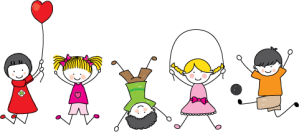
‘If we could give every individual the right amount of nourishment and exercise, not too little and not too much, we would have found the safest way to health. ‘ – Hippocrates
Lets look at a scenario —your kids have come home from school with loads of homework, including studying for a test the next day. They also need to start working on a project. Then there’s the dance/art/music lesson that’s on their calendar as well. For some, there seems to be barely enough time to fit in eating (forget about the physical activity) especially as they grow older.
Sounds Familiar ??
No wonder some kids feel that they just don’t have time for physical activity. Their schedules are overflowing, and the easiest one to suffer out is physical activity.
But as a parent, you need to make sure that your child has time for all the things that are important including daily physical activity especially if your child is overweight.
We as pediatricians continue to be disturbed by the trends we are seeing in the levels of physical activity of children, which appear to be headed in the wrong direction and subsequent rise in obesity. You see very few children playing in parks, with problem worsening in winters and during exam times.
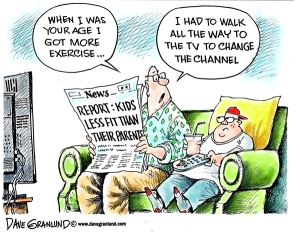
Did You Know?
- Only 1 in 4 children are physically active every day.
- About 1 out of 3 children is either overweight or obese in India and incidence is rising (India has 2nd highest number of obese children in world).
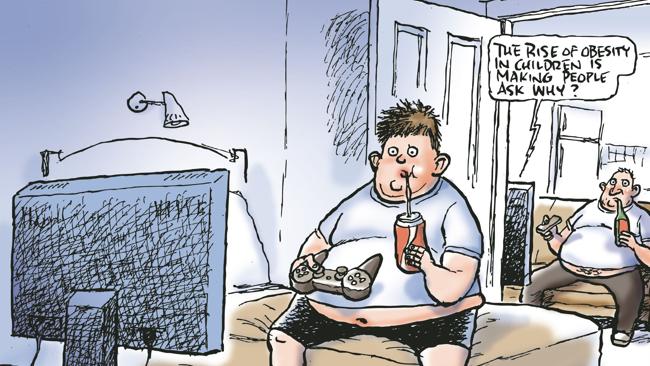
- Less than 50% of the time spent in sports practice, games, and physical education class involves moving enough to be considered physical activity.
- Children spend more than 6 hours per day on average using TVs, computers, phones, and other electronic devices for entertainment/school projects.
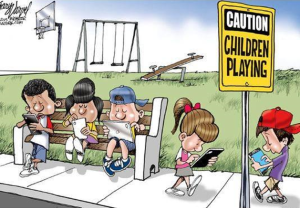
- Overweight teens have a 70% chance of becoming overweight or obese adults.
Why is it important for kids to be active?
Being physically active has many health benefits no matter what age you are and decreased risk of many diseases and health problems. In other words, a longer and healthier life! There are also some benefits that may appeal to kids’ competitive nature and desire to do their best.

Active kids are more likely to have:
- A healthy weight, decrease in body fat
- Stronger bones, joints and muscles with improved flexibility
- A reduced likelihood of developing diabetes and other lifestyle diseases
- More energy
- A greater ability to handle stress
- Improvements in self-confidence and self-esteem
- Greater social acceptance by physically active peers and thereby opportunities to make new friends
- Better concentration, memory, problem solving and attention at school leading to better grades
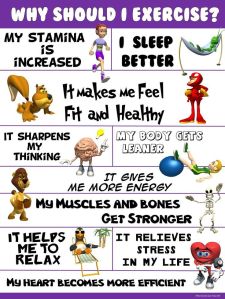
How do I encourage my child to be active?
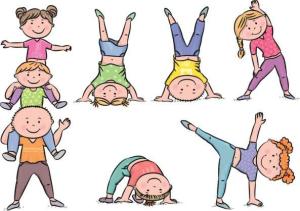
Children are naturally active. Babies rock their bodies and kick their feet, and toddlers love to move around, dance, climb and jump. Many older children enjoy organized sports and playground games. As they grow into adolescents, they tend to become less active. This is especially true for girls in India, who may need even more support and encouragement to stay active.
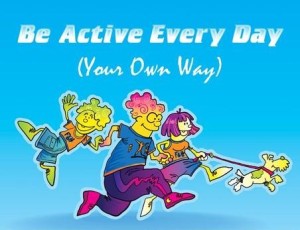
You should have a clear picture of your child’s activity level—and whether they need to change course.
Are they watching too much TV? Are they spending too little time playing outdoors after school or on weekends?
So where should you begin? How much time does your child need to spend being active? How intense does this activity need to be?
The answers to these questions may be different for your child than it is for, let’s say your neighbour’s kid. If your child has been mostly sedentary, with occasional PE classes at school, minimal outdoor play, no extracurricular physical activities, and hours of TV watching every day, their starting point should be different than that of a fairly active youngster. So plan accordingly or discuss out with your doctor. But remember it should become a routine part of their life, as important as brushing their teeth and sleeping.
Getting Started:
So here are some ways I tell to get started ( you can devise your own ways too):
- Be a role model: As I always say… 😊 Children who regularly see their parents enjoying sports and physical activity are more likely to do so themselves.
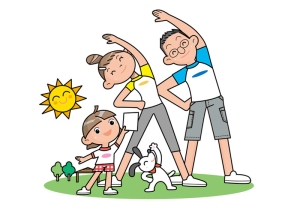
- Turn off the TV: Limit TV watching, mobile and computer use. The recommendation is no more than 1 to 2 hours of total screen time, including TV, videos, computers, and video games, each day. Use the free time for more physical activities. Don’t use electronic devices as babysitters.

- Choose an activity that is developmentally appropriate: For example, a 7- or 8-year-old child is not ready for weight lifting or a 3-mile run, but soccer, bicycle riding, and swimming are all appro¬priate activities.
- Find a fun activity: Help your child find a sport that they enjoy. The more they enjoy the activity, the more chances are they will continue it. Don’t use physical activity as a punishment.
- Plan ahead: Make sure your child has a convenient time and place to exercise.
- Provide a safe environment: Make sure your child’s equipment and chosen site for the sport or activity are safe. Make sure your child’s clothing is comfortable and appropriate.
- Make time for exercise: Some children are so overscheduled with homework and other planned activities that they do not have time for exercise. Make it as essential as eating.
- Provide active toys: Provide kids with opportunities to be active. Give them active toys/sports equipment for birthday gifts, like football, bikes, skateboards, roller skates, scooters, jumping rope etc. Young children especially need easy access to balls, jumping ropes, and other active toys.
- Do not overdo it: When your child is ready to start, remember to tell them to listen to their body. Exercise and physical activity should not hurt. If this occurs, your child should slow down or try a less vigorous activity. As with any activity, it is important not to overdo it. If your child’s weight drops below an average, acceptable level or if exercise starts to interfere with school or other activities, talk with your child’s doctor.
- Praise and support: Praise, rewards and encouragement help kids to stay active. Support their participation in sports, dance and other active recreation.
- Talk with your child’s doctor: Your child’s doctor can help your child understand why physical activity is important. Your child’s doctor can also suggest a sport or activity that is best for your child.
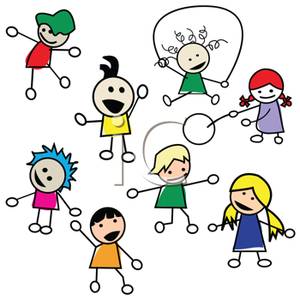 Above all, keep it safe, and keep it fun!
Above all, keep it safe, and keep it fun!
What if my child is differently-abled or overweight?
All children, even differently-abled ones and especially overweight ones, need to be physically active. This may be particularly helpful for the physical and psychological well-being of these children. Support them in being as active as much as possible. Don’t compare them to other children or ridicule them if they’re not able to do as much. Instead focus on and celebrate their achievements and successes. Be a motivator!!
Energy Out: Daily Physical Activity Recommendations:

The daily recommendation for physical activity for children 6 years and older is at least 60 minutes per day. Active play is the best exercise for younger children.
Children aged 0-1 years should have some physical activity several times each day. This includes floor play and crawling, and at least 30 minutes of tummy time for babies who aren’t up and moving yet.
Children aged 1-5 years should be physically active for at least three hours each day, with activity spread across the day. This includes energetic play like running or jumping.
The 60 minutes does not need to be done all at once. Physical activity can be broken down into shorter blocks of time. If your child is not active, start from where you are and build from there.
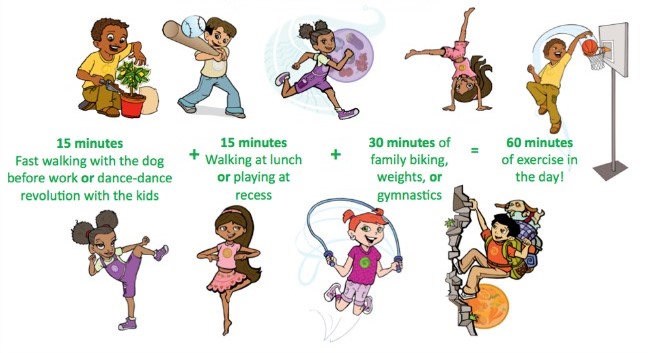
Include muscle strengthening and flexibility activities on 3 or more days each week such as monkey bars, tree climbing, pushups, pull-ups, karate.
Below is a plan which is advocated by American Academy of Pediatrics for exercising in kids.
FITT method
FITT (frequency, intensity, time, and type) is a way to remember the general guidelines for what should be included in a fitness plan. But remember that each child’s fitness goal will be different based on age, sex, current fitness level, and available resources.
- Frequency— Every day.
- Intensity—Choose at least a moderate intensity activity daily and also try to add a few more vigorous activities over the week (vigorous activity is one that makes your heart beat faster, makes you breathe hard and sweat)
Examples of Moderate Activity: Slow walking (3.5 mph), Slow bike riding (<10 mph), Dancing, Stretching etc
Examples of Vigorous Activity: Fast walking (4.5 mph), Fast bike riding (>10 mph), Jogging or running, Aerobics etc and Competitive sports: basketball, football, soccer, tennis ( which involve lots of running)
- Time (duration)— Total time of at least 60 minutes of activity each day should be planned out. This can be done all at once or added together over several shorter 10- to 15-minute blocks of activity. Breaking it up into smaller blocks of time is a great way to start a new program or fit activity into a busy schedule.
- Type— It can include a variety of team or individual sports, recreational or family activities, active hobbies like walking or bicycling.
Physical activity needn’t be exercise only. The most important thing is choosing something fun and which involves ample moving around !!
Remember exercise along with a balanced diet provides the foundation for a healthy, active life.
So one of the most important things you as a parent can do, is encourage healthy habits in their children early on in life. It is not too late to start. In today’s digital world, it can be hard to get your kids to put down the devices and do something active. With a little effort, we can help them learn healthy habits now and find activities they can love for a lifetime.
So the take home message……?
“Take care of your body! It’s the only place you have to live!!” – Jim Rohn
SIT LESS, MOVE MORE.
So what are you waiting for? Let’s get moving….!!
Healthy kids; Happy kids!!
Dr Garima| themoppetsclinic 🙂
Sources:
- American Heart Association: Physical activity recommendations in kids; 2018
- Julia MK Alleyne; Paediatrics Child Health

Very well written…
Thanks 🙂